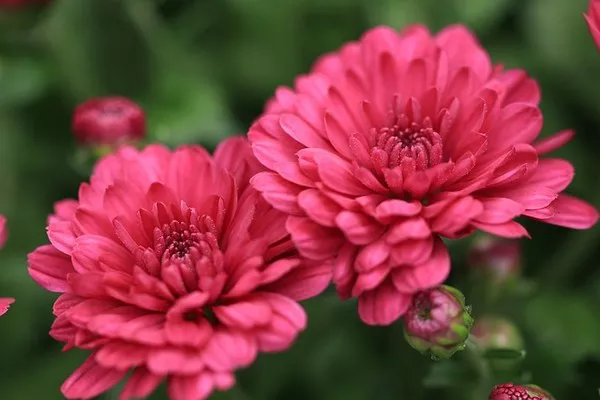In the rich tapestry of botanical symbolism, certain flowers stand out as embodiments of enduring qualities. Among these, the symbolism of longevity holds a special place, encapsulating the essence of resilience, perseverance, and the enduring spirit of life. From ancient mythologies to modern cultural expressions, flowers have served as potent symbols of longevity, conveying profound meanings across diverse contexts.
The Historical Significance of Longevity in Floral Symbolism
The association between flowers and longevity dates back centuries, finding roots in the cultural and religious practices of various civilizations. In ancient China, for instance, the peony emerged as a symbol of longevity and prosperity, revered for its lush blooms and long lifespan. The concept of longevity was deeply ingrained in Chinese culture, reflected in art, literature, and traditional medicine.
Similarly, in Japanese culture, the chrysanthemum holds significant symbolism associated with longevity and rejuvenation. The Imperial Seal of Japan, known as the Chrysanthemum Seal, features this flower, underscoring its importance as a national emblem representing the enduring spirit of the nation.
In Western traditions, the olive branch has been revered as a symbol of peace, but it also carries connotations of longevity and vitality. In ancient Greece, the olive tree was considered sacred to the goddess Athena and was believed to bestow blessings of longevity and prosperity upon those who revered it.
Flowers of Longevity: Symbolic Meanings Across Cultures
Chrysanthemum (Chrysanthemum spp.): Renowned for its association with longevity in Japanese culture, the chrysanthemum symbolizes longevity, rejuvenation, and the cycle of life. Its vibrant blooms and robust growth patterns exemplify the resilience and endurance that characterize longevity.
Peony (Paeonia spp.): In Chinese culture, the peony is revered as the “king of flowers” and is deeply associated with longevity, prosperity, and honor. Its opulent blooms and long lifespan embody the qualities of longevity, symbolizing abundance and good fortune.
Olive (Olea europaea): Widely regarded as a symbol of peace and abundance, the olive tree also carries connotations of longevity and vitality. Its evergreen foliage and enduring resilience in harsh conditions symbolize the enduring spirit of life and the ability to overcome adversity.
Lotus (Nelumbo nucifera): Revered in Eastern cultures for its spiritual significance, the lotus symbolizes purity, enlightenment, and longevity. Despite growing in muddy waters, the lotus emerges unblemished, representing the triumph of beauty and purity over adversity.
Pine (Pinus spp.): In many cultures, the pine tree is revered as a symbol of longevity, resilience, and wisdom. Its evergreen foliage and ability to thrive in harsh conditions symbolize the enduring spirit of life and the wisdom gained through experience.
The Cultural Significance of Longevity in Modern Society
In contemporary society, the symbolism of longevity continues to resonate deeply, reflecting humanity’s enduring quest for meaning, resilience, and immortality. In art, literature, and popular culture, references to flowers symbolizing longevity abound, serving as reminders of the transient nature of life and the enduring legacy of the human spirit.
Moreover, the symbolism of longevity finds expression in various rituals and ceremonies, where flowers play a central role in conveying wishes for longevity, prosperity, and happiness. From birthday celebrations to religious ceremonies, flowers symbolizing longevity are often used to mark significant milestones and commemorate life’s journey.
Furthermore, the therapeutic benefits of engaging with flowers symbolizing longevity have been increasingly recognized in modern society. From the practice of flower arranging (ikebana) in Japanese culture to the use of floral essences in aromatherapy, flowers have been employed as tools for promoting physical, emotional, and spiritual well-being.
The Future of Longevity Symbolism: Trends and Innovations
As society continues to evolve, the symbolism of longevity is likely to undergo further reinterpretation and adaptation to suit contemporary sensibilities. With advances in technology and the growing awareness of environmental issues, there is a renewed emphasis on sustainability and ecological preservation, which may influence the selection and interpretation of flowers symbolizing longevity.
Moreover, the increasing integration of cultural influences and global interconnectedness is likely to result in the emergence of new hybridized symbols of longevity that reflect the diverse tapestry of human experience. By embracing the rich diversity of floral symbolism, society can cultivate a deeper appreciation for the enduring qualities of life and the interconnectedness of all living beings.
Conclusion
In conclusion, the symbolism of longevity encapsulates the enduring spirit of life, embodying qualities of resilience, perseverance, and vitality. From ancient mythologies to modern cultural expressions, flowers symbolizing longevity serve as potent reminders of the transient nature of life and the timeless quest for immortality. By honoring these symbols and engaging with their profound meanings, humanity can cultivate a deeper understanding of the interconnectedness of all living beings and the enduring legacy of the human spirit.

